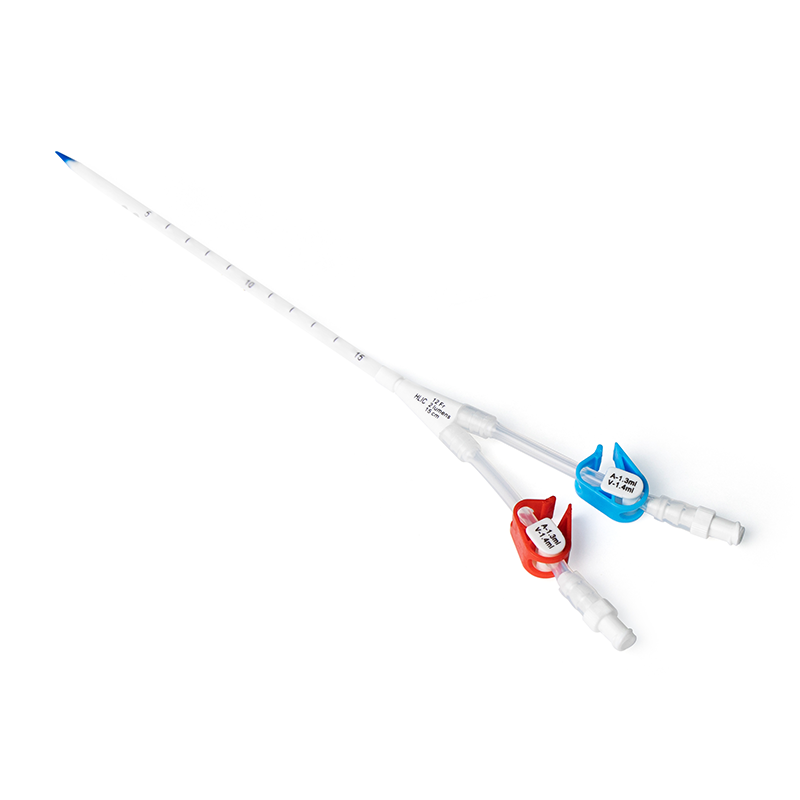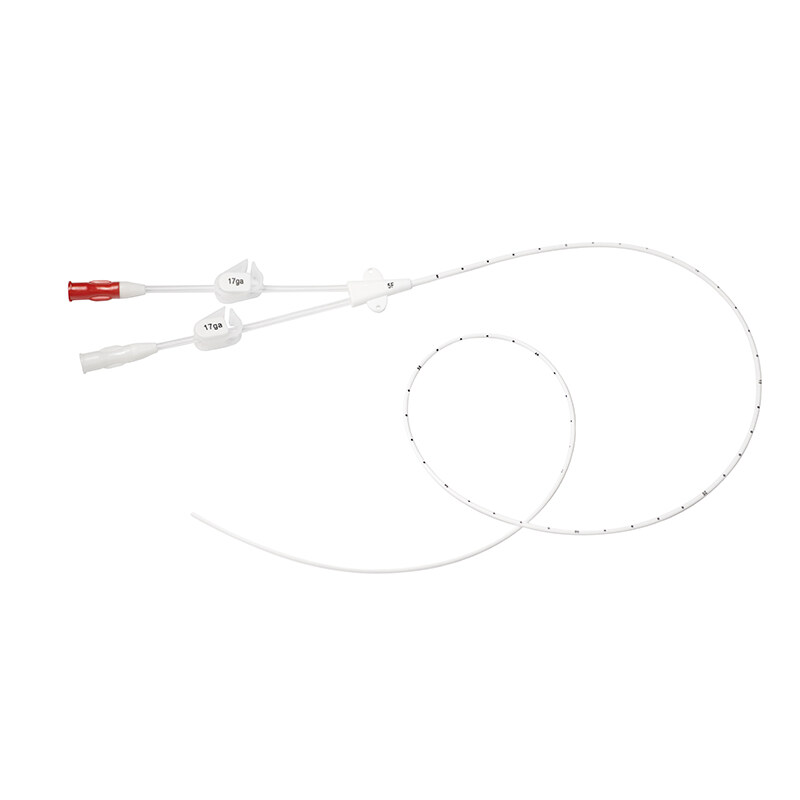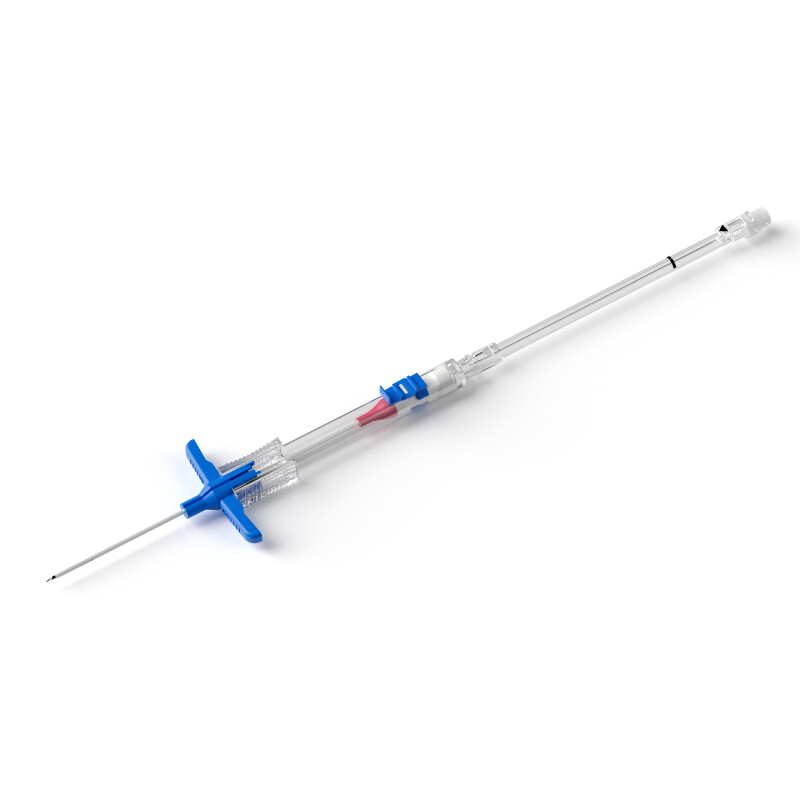In the treatment of critically ill patients, radial artery puncture and catheterization is a key procedure for monitoring invasive arterial blood pressure and obtaining blood gas analysis. However, these patients often suffer from circulatory failure, weak arterial pulse, and poor peripheral perfusion, which make traditional blind puncture "even more difficult". Repeated punctures not only delay the rescue time but also easily lead to complications such as hematoma and infection, increasing the patients' pain. A clinical study published in World Latest Medicine Information Abstracts compared the effects of "traditional palpation-guided blind exploration" and "ultrasound-guided modified Seldinger technique" in radial artery puncture of critically ill patients, providing a clear direction for clinical operations. Today, we will combine the research data to understand the technical advantages and the adaptability of Haolang Medical arterial catheters, so as to "accelerate and escort" the treatment of critically ill patients.
1. Focus on Puncture Pain Points of Critically Ill Patients
1.1 Selection of Research Objects
A total of 60 critically ill patients who needed surgery in the operating room of a hospital in Zhejiang Province were selected and randomly divided into 2 groups (30 cases in each group):
(1) Group A (traditional group): A 20G arterial puncture needle was used for radial artery puncture and catheterization under palpation-guided blind exploration.
(2) Group B (modified group): A 20G arterial puncture catheter kit + ultrasound-guided modified Seldinger technique was adopted. The radial artery was located by ultrasound, and after puncture, a guide wire was inserted, followed by the placement of the arterial catheter.
1.2 Key Inclusion and Exclusion Criteria
1.2.1 Inclusion Criteria
(1) Critically ill patients who required invasive arterial blood pressure monitoring and repeated arterial blood gas analysis before surgery.
(2) The left radial artery was selected as the puncture site for the first time in all cases.
(3) All puncture operations were performed by the same physician who was proficient in radial artery puncture and catheterization as well as ultrasound-guided techniques.
1.2.2 Exclusion Criteria
- Patients with severe coagulation dysfunction.
- Patients with infection at the puncture site.
- Patients with arterial occlusive disease.
- Patients with insufficient ulnar artery blood supply indicated by the Allen test.
- Patients who refused puncture.
1.3 Observation Indicators
The five core indicators, including arterial puncture time, average number of punctures, first-attempt puncture success rate, total success rate, and complication rate, were mainly compared.
II. Advantages of Ultrasound-Guided Modified Seldinger Technique
Table 1 Comparison of arterial puncture time and average number of punctures between the two groups (mean ± standard deviation)
|
Group
|
Number of cases
|
Arterial puncture time (min)
|
Average number of punctures
|
|
Group A
|
30
|
10.25 ± 2.13
|
2.76 ± 1.55
|
|
Group B
|
30
|
5.66 ± 1.47
|
1.12 ± 0.46
|
|
t
|
|
16.060
|
9.185
|
|
P
|
|
0.001
|
0.001
|
The puncture time in Group B was nearly halved compared with that in Group A (5.66 min vs 10.25 min), and the average number of punctures was only 1.12 times (2.76 times in Group A). For critically ill patients, every minute saved can gain more time for rescue — the "visualized" positioning by ultrasound can accurately find the optimal puncture site without repeated probing; the procedure of the modified Seldinger technique, which "places the guide wire first and then advances the catheter", further reduces operational redundancy and improves efficiency.
Table 2 Comparison of first-attempt puncture success rate and total success rate between the two groups [n(%)]
|
Group
|
Number of cases
|
First-attempt puncture success
|
Total success
|
|
Group A
|
30
|
21 (70.00)
|
24 (80.00)
|
|
Group B
|
30
|
27 (90.00)
|
29 (96.67)
|
|
Χ²
|
|
12.500
|
13.484
|
|
P
|
|
0.001
|
0.001
|
First-attempt puncture success rate: Group B was 20% higher than Group A, which means 90% of patients could "achieve success with a single puncture", avoiding vascular injury caused by repeated punctures; - Total success rate: Group B was as high as 96.67%, with only 1 case of failure, while there were 6 cases of failure in Group A — for critically ill patients with poor vascular conditions, the "high success rate" directly reduces the probability of needing site change (such as to the dorsalis pedis artery) due to puncture failure, and decreases patient trauma.
Table 3 Comparison of incidence of complications between the two groups [n(%)]
|
Group
|
Number of cases
|
Hematoma
|
Infection
|
Arterial injury
|
Total
|
|
Group A
|
30
|
4 (13.33)
|
6 (20.00)
|
4 (13.33)
|
14 (46.67)
|
|
Group B
|
30
|
1 (3.33)
|
3 (10.00)
|
1 (3.33)
|
5 (16.67)
|
|
χ²
|
|
6.548
|
3.922
|
6.548
|
15.993
|
|
P
|
|
0.011
|
0.048
|
0.011
|
0.001
|
The total incidence of complications in Group B was only 16.67%, which was 30% lower than that in Group A (46.67%):
- The incidence rates of both hematoma and arterial injury decreased from 13.33% to 3.33%. This is because ultrasound can clearly distinguish arteries from surrounding tissues, avoiding vascular injury caused by blind puncture;
- The infection rate decreased from 20% to 10%. The "minimally invasive" operation of the modified Seldinger technique reduces the exposure time of the puncture site, thereby lowering the risk of infection.
The data in the above tables are cited from the reference literature.
III. Why is "Ultrasound + Modified Seldinger Technique" More Suitable for Critically Ill Patients?
- Visual positioning to solve the problem of "blind exploration"
Critically ill patients often have weak arterial pulses and poor peripheral perfusion. Traditional palpation relies on "tactile sensation", which easily leads to misjudgment of vascular location. Ultrasound can real-time display the size, course of the radial artery and its relationship with nerves/veins, accurately locating the puncture site and avoiding "exploration based on experience".
- Improved procedure to reduce vascular injury
Traditional blind exploration involves direct puncture with an over-the-needle catheter, which is prone to piercing the vascular wall due to angle deviation. The modified Seldinger technique uses a flexible guide wire for guidance, and then the arterial catheter is inserted along the guide wire. The catheter enters the blood vessel "anterogradely" along the guide wire, reducing friction and tearing of the arterial intima, and lowering the risk of hematoma and arterial injury.
- Adapting to the "fast, accurate, stable" needs of critical care
Critically ill patients require rapid establishment of arterial access to monitor vital signs. Group B completed catheterization in an average of 5.66 minutes, saving nearly 5 minutes compared with Group A, which gains crucial time for the rescue of patients with acute critical illnesses such as shock. The high success rate and low complication rate also reduce treatment delays caused by puncture-related issues.
IV. Adapting to Advanced Technology and Demonstrating Clinical Application Value
Haolang Medical arterial catheters are specifically designed for "visual puncture technology". In terms of material, structure and performance, they comprehensively meet the clinical needs of the ultrasound-guided modified Seldinger technique:
- Hydrophilic nitinol guide wire: It can be smoothly inserted along the vascular path located by ultrasound, reducing friction with the vascular wall and further lowering the risk of arterial injury (highly aligning with the "low complication" requirement in the study);
- Complete catheter specifications: Available in multiple specifications including 18G, 20G, and 22G, it is suitable for critically ill patients and also meets the needs of children or patients with slender peripheral blood vessels;
- Polyurethane material + dedicated fixation device: The catheter is made of the latest medical-grade polyurethane material, which has excellent biocompatibility. Equipped with a dedicated catheter fixation device, it can securely fix the catheter properly, effectively preventing catheter displacement and extubation caused by restlessness in critically ill patients.


V. Conclusion
This clinical study confirms that the ultrasound-guided modified Seldinger technique, in radial artery puncture for critically ill patients, can significantly shorten operation time, improve success rate, and reduce complications, making it a "preferred option" superior to traditional blind exploration. With innovative designs in material and structure, Haolang Medical arterial catheters are deeply compatible with this advanced technique, further amplifying the clinical value of "speed, accuracy, stability, and safety". In the future, Haolang Medical will continue to focus on the clinical needs of critical care, pursue continuous innovation, provide medical staff with more efficient operating tools, reduce puncture-related pain for patients, and contribute to improving the quality of treatment for critically ill patients.
References
Shi Y B, Luo Y P, Chen H Q. Application of Ultrasound-Guided Modified Seldinger Puncture Technique in Preoperative Radial Artery Puncture and Catheterization for Critically Ill Patients[J]. World Latest Medicine Information Abstracts (Continuous Electronic Journal), 2020, 20(42): 284-285. DOI: 10.3969/j.issn.1671-3141.2020.42.174.






